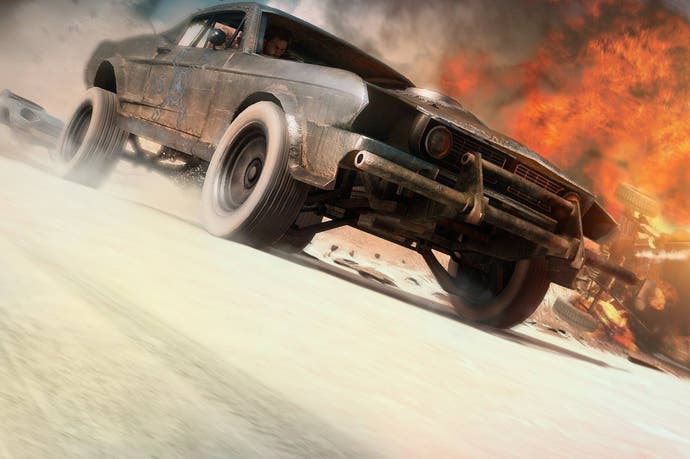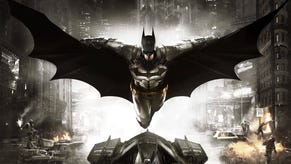Face-Off: Mad Max
PC owns the Fury Road, but PlayStation 4 and Xbox One aren't left in the dust.
Our first look at Mad Max showed Avalanche Studios handing in a solid cross-platform conversion where the visually stunning open world wasteland is given the full 1080p treatment on both PS4 and Xbox One, with almost identical visual features and performance. Aside from a couple of mostly irrelevant visual anomalies, it's a great example of a cross-platform project done right - both Xbox One and PS4 owners can buy the game, knowing that they haven't been short-changed in terms of graphics or gameplay.
With that solid console showing in mind, how does the PC version hold up? Avalanche Studios lead development on PC first, with the engine designed to scale across multiple platforms. This allows for the potential of higher quality assets and better effects work targeting high-end gaming rigs, while the consoles and lower-end computers get by with lower graphical settings. In the case of Mad Max though, it appears that Avalanche has targeted the high-end experience across all formats, with PS4, Xbox One, and PC all sharing a similar standard of visual quality. The main difference here comes down to being able to power past 1080p resolutions on PC while delivering gameplay at a slick 60fps, though we see some small refinements in other areas.
Selecting 1080p resolution to match up with our console captures, initial impressions reveal a similar level of image quality across all versions. What we suspect is a custom post-process anti-aliasing solution is in play providing generally excellent levels of edge-smoothing across the vast desert plans and rolling sand dunes of the wasteland. Sub-pixel shimmering remains a bugbear when exploring the various outposts dotted about the environments, but otherwise image quality is generally solid.
Similarities between consoles and the PC game extended to other areas of the game too: baseline texture detail, geometry complexity and the bulk of the effects work is largely identical with smoke, particles and depth of field all rendered to the same standard, though object blur displays some minor ghosting artefacts on the PC in certain scenes with the game running at 60fps. Avalanche Studios has set the bar high with PS4 and Xbox One, and it's clear that the developers were intent on bringing the high-end PC experience to console. In that respect the PC version represents more of a refinement than a revolution where graphical upgrades are concerned.
Digging a little deeper reveals the appearance of increased texture detail in a few areas on PC, with walls, tyres, and other surfaces sometimes sporting more intricate patterns and indentations. Not all surfaces and objects benefit from the upgrade though, and most of the time we are looking at the same artwork on all formats. In fact, core texture quality on consoles appears to match the PC game maxed out on high settings, along with a similar level of anisotropic filtering in use across all three platforms that varies in quality from scene to scene. Distant textures can often fairly appear crisp and clean in one area, but then take on a blurry appearance in another. The amount of debris also varies between PC and consoles on the ground, with this element appearing randomised, though there are usually fewer objects scattered across the floor in the distance on PS4 and Xbox One
Character artwork is another area where we spot variances in texture resolution between platforms, with the PC displaying more detail on clothing in some scenes, while matching the Xbox One and PS4 versions in others. Curiously, some lower resolution textures and normal maps are present on the characters on the PS4, though not everyone is affected - for example, Chumbucket is rendered with equal quality across all formats. This suggests some other anomaly, as opposed to the developer making intentional changes for each platform.



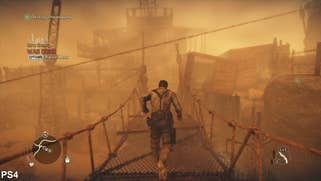
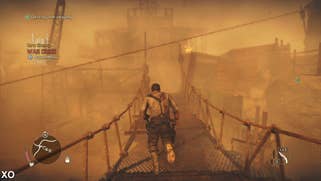
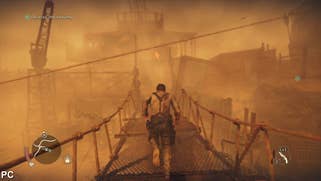



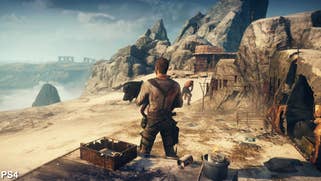
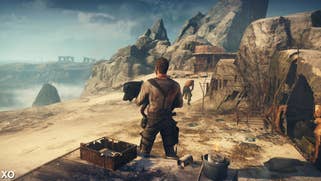
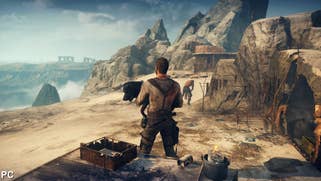






Elsewhere, we see the same impressive usage of volumetric lighting deployed across all formats, with consoles operating at the PC's maximum setting of very high. The randomised nature of alpha-based dusts and fog sometimes causes volumetric effects to present a little differently between platforms, but this simply comes down variances in how the sprite-based effects are layered at any given time, causing shadows to be cast in different places on-screen. The same lighting model is in effect across all three versions of Mad Max, though there are more shadow-casting light sources in operation on PC. Shadows are also rendered in a slightly higher resolution too, though filtering sometimes appears a touch more inconsistent. Shadow quality on consoles is set to the equivalent of the PC's high setting, one notch down from the max.
So far the PC game certainly delivers a more refined presentation overall, but the upgrade here is fairly modest with PS4 and Xbox One delivering a very similar visual experience in almost every area. Instead, where the PC version really comes into its own is the ability to run the game at higher frame-rates and resolutions than on consoles. And this is something that completely transforms the overall gameplay experience. An i5 paired with a GTX 780 comfortably delivers a solid 60fps with only the occasional pause cropping up on rare moments throughout several hours of capture. Combat feels more responsive than on consoles while the increased frame-rate adds a welcome extra layer of precision to the car handling when driving across the wasteland or engaged in vehicular combat.
The jump to 60fps adds a tangible boost in temporal resolution, which allows for fine details in the artwork to pop out a little more while moving at speed - something that particularly stands out on a plasma TV, which lacks the sample and hold blurring effect present on LCD screens. The use of object blur, depth of field, and other post-process effects ensure that much of game's core cinematic look is retained despite the added smoothness of the 60fps update - though it's worth pointing out that movement appears less filmic and more like a HFR (high frame-rate) presentation due to the increased level of smoothness on offer, but we feel this is actually a plus in a video game.

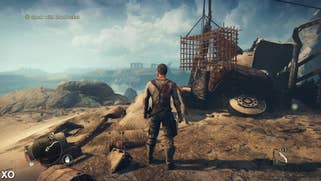
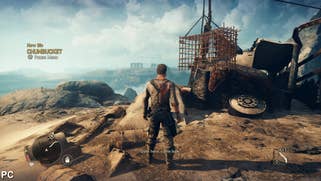
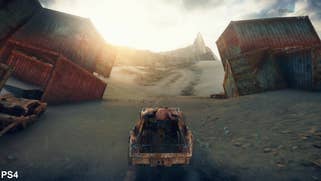
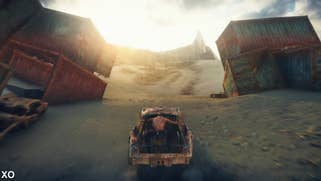

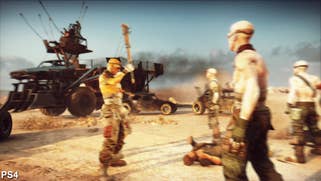

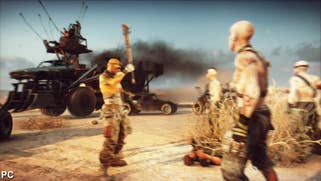






We've already covered PS4 and Xbox One performance in-depth, but to recap, a 30fps cap is in place in consoles with adaptive v-sync used to help prevent large drops in smoothness during play. Both PS4 and Xbox One successfully delivered a locked 30fps update for prolonged durations, and for the most part dips in frame-rate are limited to minor one or two frame drops that have no tangible impact on gameplay. It's possible to see a very mild stutter occurring during these moments, but the disruption is small enough to stay in the background and not draw attention to itself. Out of the two machines, Xbox One gains a small advantage during gameplay with these frame blips occurring less often than on PS4, though the reverse is true during the cut-scenes, where PS4 provides a touch more stability. Generally both platforms provide a similar experience, with a solid, consistent 30fps on the cards for lengthy segments of gameplay.
Based on the first few hours of the game, frame-rates are mostly solid across a general run of play, although there are random moments where the experience suffers from heavy stuttering for brief periods. On the PS4 this manifested in the form of a 24fps drop during a sandstorm while exploring an outpost, but we also encountered the same issue on the Xbox One in another area when traversing down from a lookout tower facing out towards Gastown. In this scene frame-rates dropped down closer to 20fps resulting in some major stuttering while panning the camera around and surveying the horizon, but normal 30fps metrics quickly resumed as soon as we left the area.
We immediately went back to the locations where these unusual drops occurred later on during our capture session, but couldn't replicate the issue. Curiously, the freak drop to 24fps on PS4 occurred just before reaching a building that triggers the end of the sand storm if you choose to go inside and drop down to an underground passage, suggesting that streaming may be a likely cause. It's also worth mentioning that we performed all of our capturing after the day one patches were installed on both consoles, so at the time of writing these issues haven't been resolved.
Mad Max - the Digital Foundry verdict
The PC version of Mad Max may only deliver a relatively minor graphical upgrade over the console versions at 1080p, but the ability to run the game at 60fps provides a definite edge where gameplay is concerned. 1080p60 is easy to achieve on higher-end systems with room to breathe in terms of upwards scalability to 1440p and beyond. For those with lower-end hardware the game offers up plenty of adjustable settings ranging from texture quality and geometry complexity, to lighting and post-processing - allowing for plenty of scalability in order to achieve 30fps and 60fps on broad range of configurations. Mad Max appears well-optimised on PC and getting a satisfyingly playable experience with a good level of graphical quality should be easily achievable on most gaming-orientated PC set-ups.
Avalanche Studios has also spent a lot of care and attention with the console versions too. The near-locked 30fps update ensures that gameplay stays smooth and consistent for extended periods, while the general presentation between the two consoles is pretty closely matched with mostly identical effects and artwork. A reduced Xbox One resolution probably wouldn't have had a huge impact on the game's visual presentation bearing in mind the heavy post-processing, but the fact that Avalanche has retained full HD resolution on both versions is obviously a nice bonus.
With that in mind, can one single console version of the game emerge triumphant from the Digital Foundry Thunderdome? Well, if pressed, we'd say that the appearance of lower resolution textures and a slightly less stable frame-rate on PS4 makes the Xbox One game the one to have if you have access to both machines, but the bottom line is that this is one of the closest cross-platform games we've seen yet and it's a game we can recommend regardless of platform..
